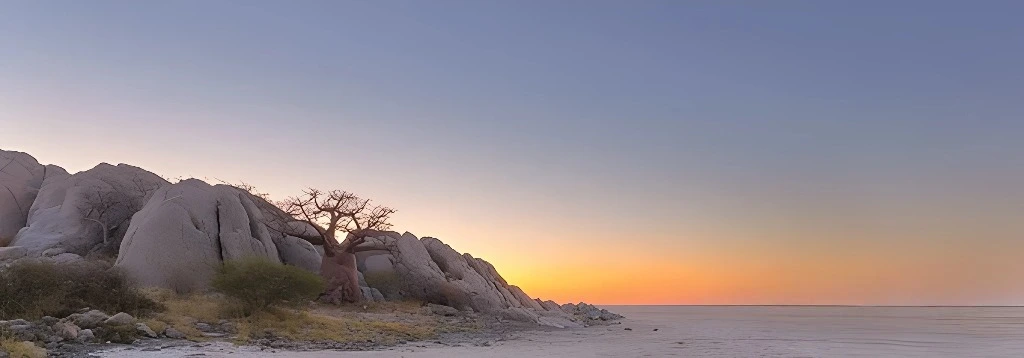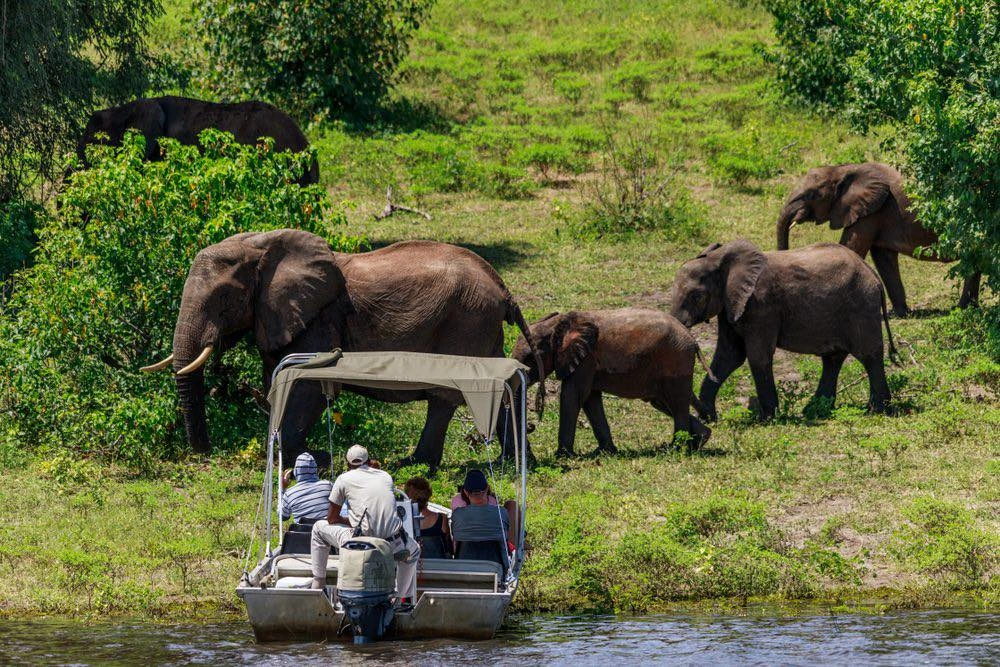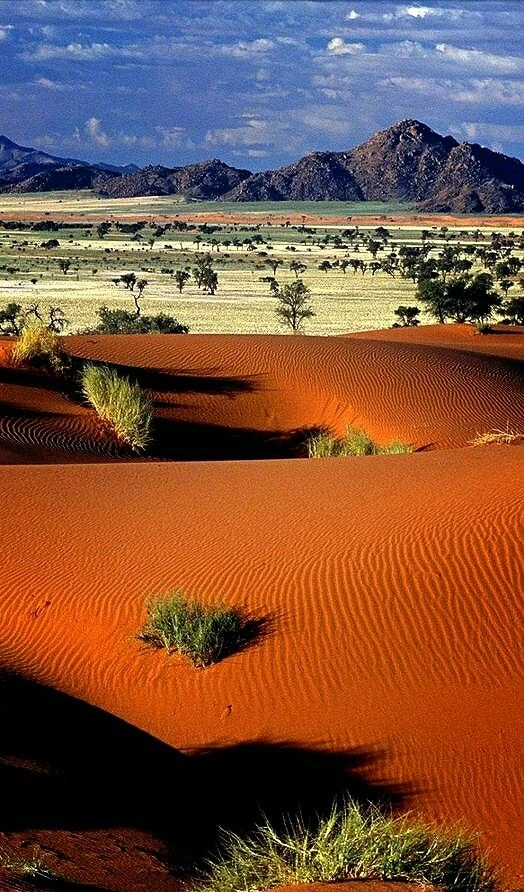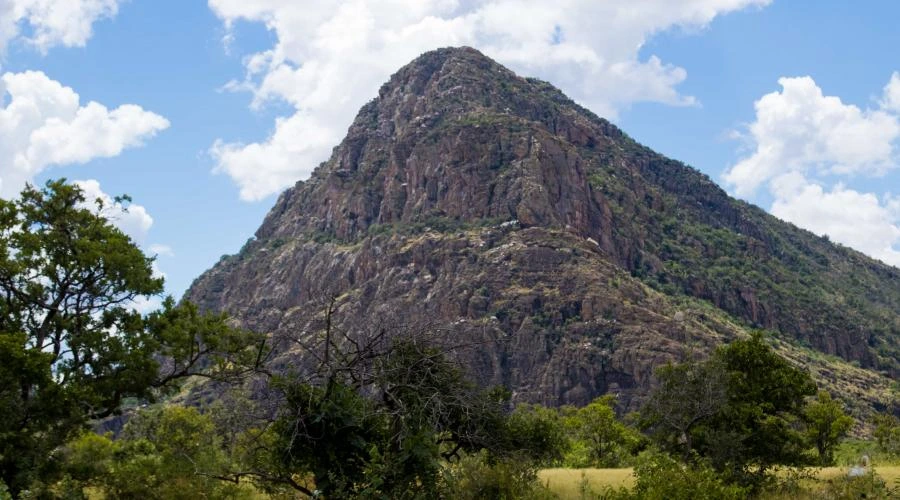Botswana doesn’t shout to get noticed. It’s this quiet spot in southern Africa that pulls you in without trying hard. People talk about the Okavango Delta or Chobe’s elephant herds, but what sticks is how still it feels—like you’re in a world that hasn’t been messed with. You hear the wind, a lion off in the distance, or just your heartbeat, and that quiet hits differently. Here’s why that silence, plus the wild places and cool culture, makes Botswana a spot you won’t shake.
Makgadikgadi Pans: Quiet That Feels Out of This World
Stand on the Makgadikgadi Pans, and it’s like you’re on Mars. These salt flats stretch out forever, cracked and white, especially in the dry months from May to October. No cars, no people—just you and a sky that goes on and on. Camp out at a place like Jack’s Camp, and at night, it’s so quiet you might hear a hyena laugh or the wind moving the dirt. It’s weird but awesome.

When the rains come (November to April), water floods the flats, turning them into a shiny pool that brings flamingos and zebras by the thousands. Wildebeest and antelope show up, with lions and cheetahs following close. The silence changes a bit—add some bird noises or hoof steps—but it’s still there. Grab a quad bike or walk with a San Bushman guide; they’ve lived here forever and can show you how to read the land or find water. The pans aren’t just pretty—they make you feel connected to something old and real.
Okavango Delta: Water That Whispers
The Okavango Delta’s a wild wonder. This huge wetland, stretching thousands of kilometers, is a river spilling into the Kalahari Desert, making lagoons and islands out of nowhere. Elephants wade through, hippos grunt in the deep spots, and birds like fish eagles call out now and then. But even with all that, it’s calm in a way that’s hard to put into words.

Jump in a mokoro—a canoe a local pushes with a pole—and you’re gliding through clear water where you can see fish swim. The only sounds are the pole splashing or maybe a buffalo nearby. No loud engines, no crowds, just you and the wild. Stay at a camp like Xigera, with comfy tents that run on solar power, and you’re living good without ruining the feel. That quiet isn’t just no noise—it’s like you’re in a place that’s been the same for ages, no human clutter.
Chobe National Park: Elephants and Stillness
Chobe’s got elephants—about 120,000 of them—roaming its 11,700 square kilometers. In the dry season (May to September), they’re all along the Chobe River, drinking and splashing, sometimes letting out a trumpet. Take a boat from Kasane at sunset, and you’ll see giraffes and crocs too, with the sky turning pink. It’s busy with animals, but the park’s so big it never feels crowded. Head to Savuti Marsh, and it’s next-level—lions take down elephants, leopards fish, and wild dogs chase prey. Between those big moments, it’s dead silent, like the bush is waiting.

Crash at Savute Safari Lodge, and you’re in the thick of it, but it still feels private. The quiet between a lion’s roar or a hippo’s grunt is what makes Chobe stand out. It’s not just watching animals—it’s like you’re part of their world, not some outsider.
The Kalahari: A Quiet That Grabs You
The Central Kalahari Game Reserve is massive—52,800 square kilometers of dunes and dry riverbeds. It’s not your usual safari with animals everywhere. You might spot black-maned lions or cheetahs, but they’re spread out, so it’s like a treasure hunt. In the wet season (December to April), wildebeest and antelope roll through, with predators on their tail. In the dry months, it’s so still you can hear a stick break from far off. That’s the Kalahari—rough and empty, making you feel like you’re the only one around.

Camp at a spot like Kalahari Plains, and it’s just you, the desert, and stars. The San Bushmen, who’ve been here forever, can take you out. They’ll show you how to track animals or use plants for medicine, talking soft with clicks and signs. It adds to the quiet feel. The Kalahari doesn’t show off, but that stillness pulls you in hard.
Tsodilo Hills: Old Art in a Quiet Spot
The Tsodilo Hills pop up in the northwest desert like something ancient. These rocks have over 4,500 San Bushmen paintings, some 20,000 years old. The San say this is where people started, and it feels that way. Walk with a guide, and you’ll see hunters, animals, even whales, scratched into the stone. There’s a small museum and a basic campsite, but the real thing is the silence. No cars, no noise, just you and those old stories.

Hike the Male, Female, and Child hills, and it’s heavy—like you’re in a sacred place. The quiet here isn’t just no sound; it’s like the past is sitting there, waiting. If you like history or just want to feel something big, Tsodilo’s got that quiet punch.
Why the Quiet Matters
Botswana keeps it low-key on purpose. They don’t let tons of people in—small camps like Chobe Game Lodge use solar power and blend into the bush. No big resorts, no packed trails. It costs more, but that’s how they keep it wild. You might fly in on a little plane to a remote lodge, and it feels like your own secret spot.
That calm comes from Botswana being steady, too. No wars or chaos since 1966, thanks to diamond money going to schools and hospitals. You feel safe, and locals—San or Batswana—are happy to share their ways, whether it’s a village visit or crafts in Gaborone.
More Spots to Check Out
- Nxai Pan National Park: Near Makgadikgadi, it’s got Baines’ Baobabs—big old trees watching over the pans. Zebras and flamingos come in the wet season, but the dry season’s quiet beauty is just as good. It’s 4×4-only, perfect for solo explorers.
- Khama Rhino Sanctuary: Near Serowe, this spot saves rhinos and teaches kids about it. Walk or drive to see rhinos, zebras, or bat-eared foxes. It’s quiet and run by the community, great if you’re near Gaborone.
- Gaborone’s Easygoing Side: The capital’s laid-back, with a museum for Batswana art or spots from The No. 1 Ladies’ Detective Agency. It’s a chill way to see the modern side without losing the peace.
- Kgalagadi Transfrontier Park: Split with South Africa, it’s got red dunes and rare stuff like pangolins. It’s a trek, but the silence—broken by a lion or antelope run—is worth it.
Tips to Get Into the Quiet
- When to Go: Dry season (May to September) is best for Chobe and the Delta—animals are by the water. Wet season (November to April) brings zebras and birds to the Kalahari and pans. Tsodilo’s good anytime, but skip October-November heat if you can.
- Getting There: Fly to Maun for the Delta or Kasane for Chobe. Small planes hit remote camps. Driving? Get a 4×4 and plan for places like the Kalahari.
- What to Do: Try a mokoro ride, quad bike in the pans, walk with the San, or a Chobe boat trip. Want more? Horseback or a hot air balloon over the Delta.
- Where to Stay: Hit eco-lodges like Linyanti Bush Camp or camp cheap at Nxai Pan. Book early—these spots go fast.
- Keep It Real: Stick with guides for wildlife and sacred spots like Tsodilo. Keep noise down and follow local ways to hold onto the calm.
What Stays With You
Botswana’s quiet isn’t just about no sound—it’s what you feel. Standing in the pans, floating in the Delta, or looking at old rock art, you’re not just a visitor. You’re in this wild, still world that’s been here forever. It’s not loud or pushy like some places—it doesn’t have to be. That calm gets into you and sticks. Whether it’s elephants drinking, a San guide’s soft words, or stars overhead, Botswana makes you feel alive in the quietest way.

